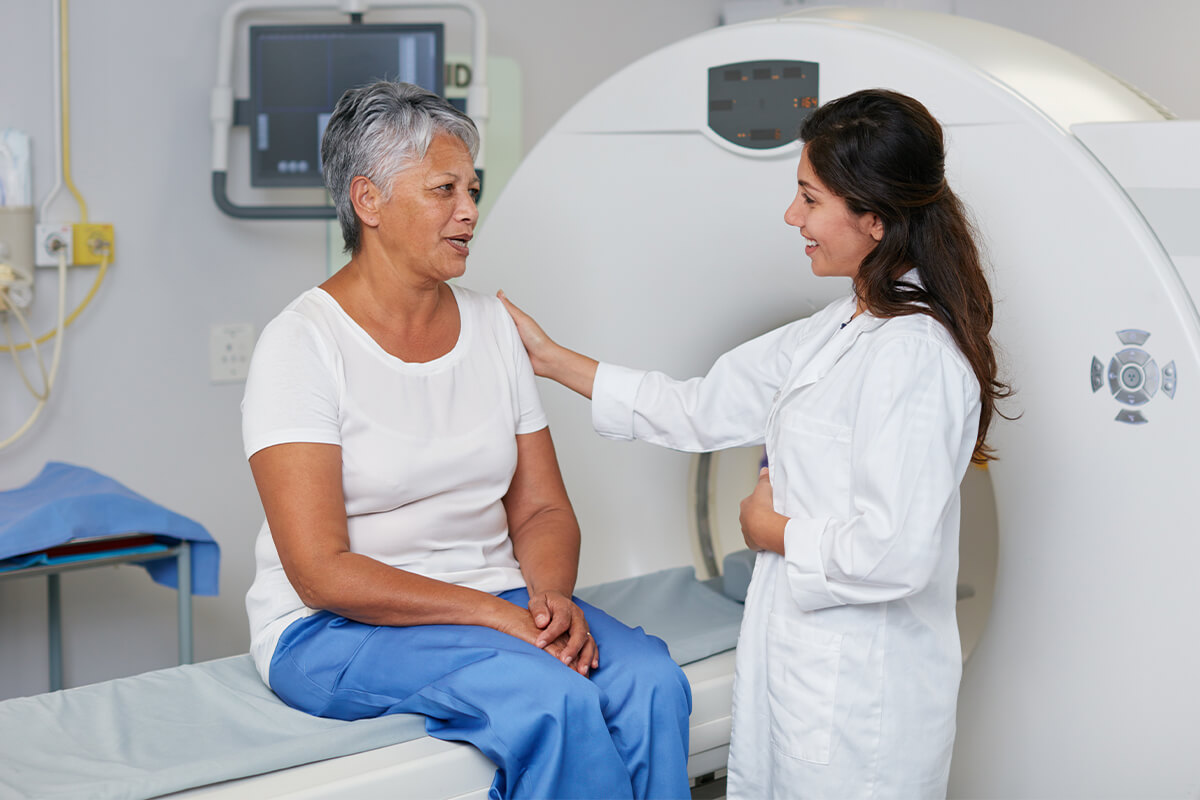Medical Imaging

Adventist Health Ukiah Valley’s diagnostic imaging services combines state-of-the-art technology with convenience and comfort. Diagnostic services are offered at two convenient locations staffed by highly trained and compassionate technologists with board-certified radiologists interpreting the results.
3D mammography
3D mammography is proven to provide greater accuracy detecting breast cancer. By taking multiple picture of each breast in just four seconds, a 3D mammogram give radiologists clear, highly focused images of the breast’s tissue, layer by layer. 3D mammography increases detection of all breast cancers by 29 percent and increases detection of invasive breast cancers by 41 percent. 3D mammography results in fewer unnecessary biopsies and reduces call backs by 41 percent.
3D ultrasound
3D ultrasound is an elective procedure that uses sound waves to create a three-dimensional image of the fetus revealing detailed images of the baby’s facial features. Optimal time for this experience is between 26 and 32 weeks gestation. Since this is an elective procedure, a doctor’s order is not needed and the procedure is not covered by insurance.
Bone densitometry (DEXA) scan
DEXA or bone densitometry examinations estimate the amount of bone mineral content in specific areas of your body. Two X-ray energies allow the radiologist to tell the difference between bone and soft tissue, giving a very accurate estimation of your bone density.
Cardiac CT scan
In a cardiac CT scan, a state-of-the-art volume computed tomography (VCT) scanner creates 64 paper-thin, cross-sectional images of the resting heart in a matter of seconds. These images are then assembled into a complex, three-dimensional picture of the heart and its arteries. The scan provides extraordinary detail and can detect cardiac abnormalities that lead to treatment if necessary.
Computed tomography CT scanning
CT scanning is an imaging technology that uses multiple channels and computers to create detailed, cross-sectional images of specific areas of the body. These images may be used to identify fractures, infections or tumors.
A CT scan is frequently used to evaluate abnormalities like blocked blood vessels. CT can serve as a valuable tool for use in minimally invasive interventional procedures. Ukiah Valley Medical Center imaging strives to keep radiation doses as low as possible.
Digital mammography
Mammography is the practice of radiographic imaging of the soft tissue of the breast. Multiple images are obtained by gentle positioning of the breast by the technologist to produce high-contrast images. Mammograms are a powerful tool for early detection of breast cancer.
Digital x-ray
X-rays are a form of electromagnetic radiation, just like visible light. X-ray machines send individual X-ray particles, called photons, which pass through the body and are recorded by computer to create digital images.
Electrocardiography (ECG or EKG)
Electrocardiography is a painless test that records the electrical activity of the heart. EKG measures the rate and rhythm of the heartbeats. This information can help detect:
- Damage to the heart
- The effects of cardiac drugs or devices such as a pacemaker that are used to control the heart
- The size and position of your heart chambers
Echocardiography and stress echocardiography
Echocardiography is an extremely safe and comfortable ultrasound exam used to evaluate the structure and function of the heart. Echo is an excellent imaging tool to evaluate size, thickness, pressures, blood flow and function of the heart muscle and valves. When used with an exercise stress test, blockages in the coronary arteries can be evaluated as well.
Magnetic resonance imaging (MRI)
MRI is an advanced imaging technique that uses a high-field magnet to produce high-resolution digital images of soft tissue and structural anatomy. MRI has revolutionized the fields of musculoskeletal, cardiovascular and neurologic imaging.
Mobile positron emission tomography (PET/CT) scan
A positron emission tomography (PET) exam supplies information about the functional activity of the tissues being studied. A computed tomography (CT) exam provides anatomical information. When combined as a PET/CT exam, the two imaging modalities give radiologists the ability to diagnose cancer, Alzheimer’s disease and inflammatory conditions. This service is offered every Monday.
Open Magnetic Resonance Imaging (MRI)
An open MRI has a larger opening then a standard MRI. This is beneficial for those that get nervous in small places (claustrophobic) and for people who are physically large.
Pediatric echocardiography
This very safe and specialized ultrasound evaluation of the heart is specifically designed for children of all ages, from newborn to adolescence. Our relationship with UC Davis allows us to send echo images to one of their expert pediatric cardiologists to be interpreted.
Picture archiving communications systems (PACS)
PACS electronically distributes, displays and stores digital radiological images, allowing physicians to view two- and three-dimensional images and related reports instantly.
Ultrasound or sonogram
Ultrasound uses high-frequency sound waves to capture diagnostic cross-sectional images of the targeted part of the body, typically used for imaging abdominal and pelvic organs, prenatal testing, blood vessels and small parts (like breasts, thyroid and testicles). A doctor’s order is required.
